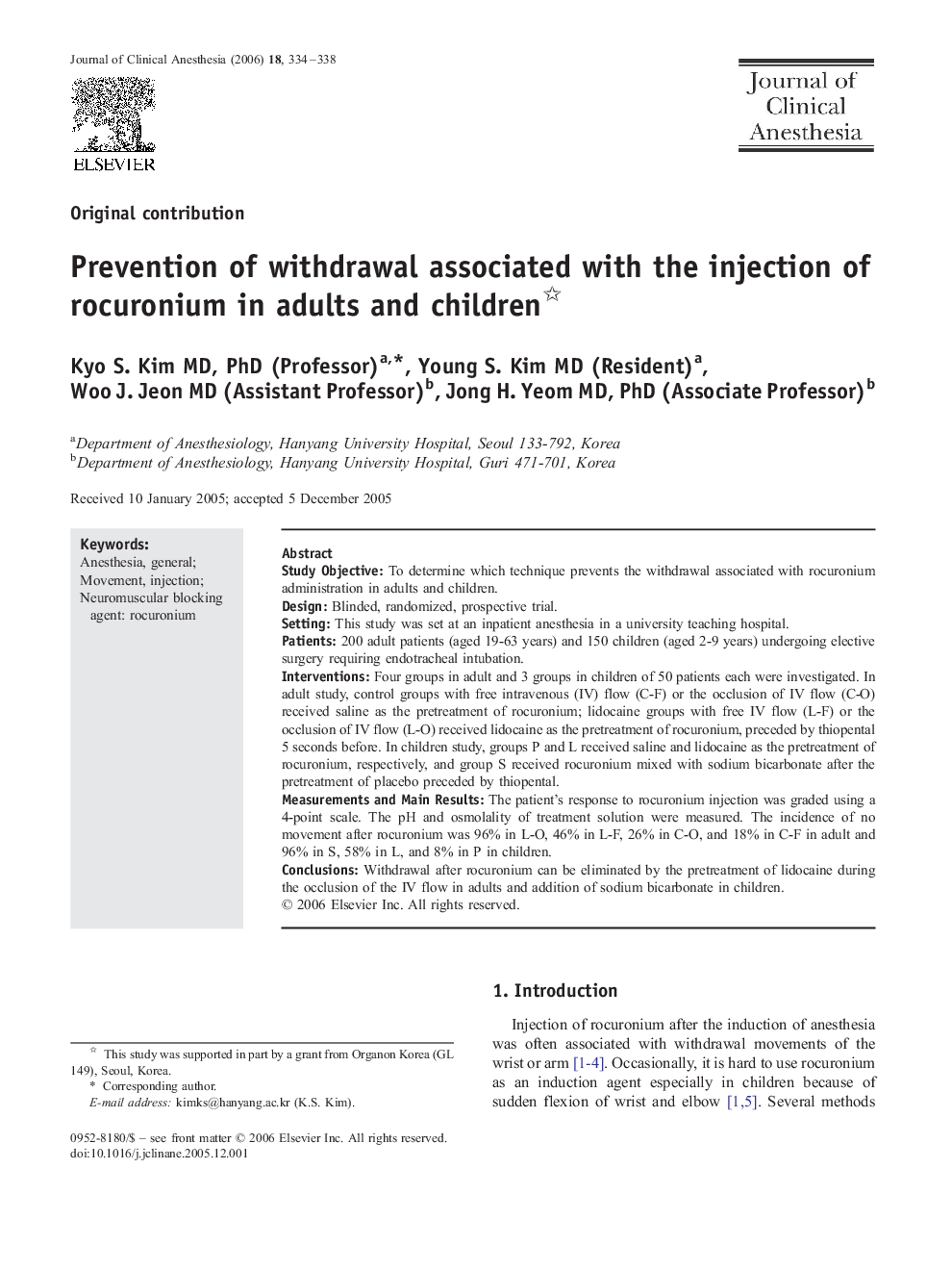| Article ID | Journal | Published Year | Pages | File Type |
|---|---|---|---|---|
| 2764244 | Journal of Clinical Anesthesia | 2006 | 5 Pages |
Study ObjectiveTo determine which technique prevents the withdrawal associated with rocuronium administration in adults and children.DesignBlinded, randomized, prospective trial.SettingThis study was set at an inpatient anesthesia in a university teaching hospital.Patients200 adult patients (aged 19-63 years) and 150 children (aged 2-9 years) undergoing elective surgery requiring endotracheal intubation.InterventionsFour groups in adult and 3 groups in children of 50 patients each were investigated. In adult study, control groups with free intravenous (IV) flow (C-F) or the occlusion of IV flow (C-O) received saline as the pretreatment of rocuronium; lidocaine groups with free IV flow (L-F) or the occlusion of IV flow (L-O) received lidocaine as the pretreatment of rocuronium, preceded by thiopental 5 seconds before. In children study, groups P and L received saline and lidocaine as the pretreatment of rocuronium, respectively, and group S received rocuronium mixed with sodium bicarbonate after the pretreatment of placebo preceded by thiopental.Measurements and Main ResultsThe patient's response to rocuronium injection was graded using a 4-point scale. The pH and osmolality of treatment solution were measured. The incidence of no movement after rocuronium was 96% in L-O, 46% in L-F, 26% in C-O, and 18% in C-F in adult and 96% in S, 58% in L, and 8% in P in children.ConclusionsWithdrawal after rocuronium can be eliminated by the pretreatment of lidocaine during the occlusion of the IV flow in adults and addition of sodium bicarbonate in children.
